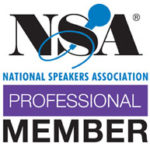Should you speak up in meetings? How do you speak confidently in meetings, or get over your fear of talking in meetings? Many aspiring leaders hesitate to speak up in work meetings, afraid of not having the right thing to say. And yet, your professional visibility and perceived leadership potential depends on this.
If you know your thought leadership could use a boost, this episode is for you.
In this episode of The Career Rx we’ll discuss:
- Presenting the right information at the right time
- How to deliver uncomfortable information smoothly
- What to do when you don’t have the answer
Today’s episode covers seven tips for speaking up with executive presence that you’ll be able to apply to your professional circumstances, no matter your career. This is inspired by a group session at one of my regular Women Physicians in Pharma networking chats, and I’ve curated the best advice right here to share with you.
By the end of this episode, you’ll know how to speak up in a way that enhances your leadership, have the confidence to speak up so that you’re both recognized and respected, and be ready for the mindset shift that you don’t actually need all the answers.
In this Episode:
[1:10] Why are you in the room in the first place? Anchor on this…
[4:50] Tell people what they need to know (not everything YOU know)
[5:23] What to say when you actually don’t know the answer
[7:45] Smart ways to deliver a dissenting or unpopular opinion
[10:55] Nix the apology! Often used as a transitional phrase, but leaders never do this
[14:15] Connecting the conversation to the bigger picture may be the best tactic
Links and Resources:
Want to join the Women Physicians in Industry Networking Group? Start here.
LISTEN TO THIS EPISODE:
SUBSCRIBE TO THE CAREER RX PODCAST:
Get every episode on your preferred player…
Apple Podcast | Google Podcast | Spotify | TuneIn + Alexa | iHeart Radio
More for you:
Courses:
The Branding Rx 18 hours of CME, mastering digital strategies for advancing your career, building your business, and growing your professional brand
The Speaking Rx learn the business of professional public speaking to establish yourself as a thought leader you are, and get paid for your speaking expertise
Industry Insider – learn exactly how to land a rewarding nonclinical career without a new degree, connections on the inside, prior experience, or a pay cut
Let’s connect!
Twitter | Instagram | Facebook | LinkedIn
Thanks for joining me on this episode of The Career Rx!
TRANSCRIPT: Episode 77 – Tips for Speaking with Executive Presence
Hey there, I’m Marjorie Stiegler and you’re listening to The Career Rx Podcast, where we tackle the important things they don’t teach you in medical school. Like how to treat your career, like the business, it really is, with strategies to accelerate the kind of success that you want, because you deserve a career you love, and a career that loves you back. Are you ready? Let’s get into it.
Hey, there, welcome back. Today, we’re going to be talking about tips for speaking up with an executive presence in meetings. So you know, I have a handful of episodes, all about how to give great presentations. So formal ones, where you’ve prepared and you’re going to have the floor the podium for a while, and you can be ready in advance to deliver a specific set of messages. But what about when you’re in a meeting?
That’s either impromptu or maybe it’s a standing meeting, you’ve got that agenda in advance, but it’s just less formal? It’s basically a discussion. How do you speak up really, with confidence and with impact, and demonstrate executive presence in those kinds of situations? So this question was inspired by a discussion in a networking group that I run for women physicians who work in pharma and biotech. So we had an hour long conversation about this, and I tried to capture some of the best gold that came out.
You know, especially in non clinical industries, but probably in any profession, meetings are a key part of the job. It’s where you show your thought leadership, it’s where you really get to connect with your colleagues all together. And it’s where leaders more senior than you get to see you in action, as well as where your peers get to see when action. So as meetings become an important part of the job, and becomes all the more true as you advance in your career.
So how can you be sure that you have good professional visibility in your meetings, right, that you are speaking up and that people see you and, you know, they hear you, and they recognize you for your thought leadership, and that you can really demonstrate a manner of doing so that, that gives off that executive presence vibe, that that helps you to show up as the leader you really are, and a leader who’s ready for more. Here are some great tips, seven tips that came out of that meeting. And I think you’ll be able to apply them to your professional circumstances really no matter what that is.
Okay, tip number one is a mindset tip, really. Remember that you are in the room for a reason, you’re in the room for a reason, you’ve been hired by the organization, and you’re expected to make a contribution in some way. So if you’re holding back and you’re not saying what’s on your mind, then really you’re not delivering on your end of the deal. And especially as you move up in leadership, keep that in mind that it’s your job to act on behalf of your patients, your clients, your internal stakeholders, whomever it is that you represent, including yourself, and just your great thinking and ideas.
That’s an expectation, that’s your job. And that’s why you’ve been hired. So if you are having some fear, which is one of the most common reasons people don’t want to speak up, or they don’t want to sound uninformed, they don’t want to sound like they have a dumb question, etc. If you’re having a confidence problem there, just always try to link back and remember that you’ve been hired for a reason. And you’re here to fulfill that. So it’s just a mindset shift.
Okay, tip number two, is to tell people what they need to know, not everything that you know. And what I mean by this is, you know, you should be saying much less than what you know, it’s very tempting, a lot of people will just think out loud, right? It’s very tempting, you get asked a question, and especially a question by a leader. And you start to just sort of pontificate and say all the things that you know about it, and your pros and your cons, and they’re coming out. And the thing is, though, especially busy leaders, they want your recommendation. They don’t necessarily want all the details or your full train of thought, they want the punchline, what is your position? What is your recommendation? What should we do? What do you think, you know, answer that question first.
Because again, just number you know, remembering tip number one, you’re expected to make a contribution you’ve been hired for your specific skill sets, and you’re thinking, so put that out on the table first. Obviously, you can be prepared to unpack it more. I’m prepared to speak in more detail, prepared to talk more and tell people more about what you know. But let the leaders ask those questions. It’s a really great way to come across with confidence and executive presence, to simply make a recommendation that shows that you have thought it through, right, that’s your contribution you thought this through for everybody. And here’s your recommendation.
If you tell people everything that you know, you run the risk of seeming like you’re rambling seeming unlike maybe you don’t have a firm recommendation and that you’re a little bit wishy washy, and you also run the risk of people misunderstanding your position, because they’re hearing you, you know, sort of share all these facts, they may come to their own conclusions. And they may be misinformed, if you’ve only shared, you know, part of what you know there. So be sure that you tell people what they need to know. Not everything that you know.
Okay, tip number three, and I love this one, you don’t need to have the answer. As long as you have a response. What does that mean? We’ve heard time and again, that it’s okay to say you don’t know, right. And that’s one of the strengths and demonstrating leadership and confidence is that it’s fine to say you don’t know. And I think that’s true. But we can go a step further. Because what we’re really talking about is not just saving face, but actually showing up as a leader. So pay attention to leaders in your inner circle and how they handle when they’re asked a question that they are not prepared to answer at that time, that they either don’t know the answer to, or work is being done on it at the at the moment, or maybe haven’t even thought about it, you will rarely hear them just sort of say that they don’t know, they will usually couch it and something that sounds a whole lot more thoughtful.
So one way you might approach it is to acknowledge that’s a really important question. Because you know, and then throw a little context in there, right? Why it’s so important. You agree it’s important. And then you can say, we have some work to do still to fully understand that, or we’re not in a position to answer that today. But what we do know is x, y, and z. So these are similar sounding, but they’re not not entirely I mean, one is an acknowledgment of the importance of the question and why. So that’s that context, because that shows, you know, and then to just acknowledge, there’s still work being done before an answer will be ready. If you do have a timeline or anything like that, then you can share that as well, but important to acknowledge the question to state why it’s important, and that work is being done to understand it. And the second approach, there is sort of a pivot back, you know, we’re not in a position to answer that yet.
But what we do know is, this is, you know, pivoting back to something that you do know, that you think is important. And of course, please be sure this is relevant to the discussion. Otherwise, you run the risk of sounding like a politician on TV, or they’ve been asked a specific question, and they don’t answer that question. They just start talking about something else, right. So you want to be sure it’s relevant, but it is okay, to pivot as long as it’s relevant to back to that intended message. Because again, if you’re in the room, you’re a thought leader. And maybe the answer that you do know, is what’s important.
Alright, number 4 – here’s another one that I love. This tip is especially relevant when you’re about to be either disagreeing with something that someone else has said, or you’re going to be delivering a viewpoint that you know, will be unpopular. Some people have no problem doing this, and they’re happy to just do it right without any prelude. Other people would like to sort of signal I’m about to say something controversial, or I’m about to say something provocative, I’m about to say. So you kind of give that advanced notice that what you’re about to do, is going to perhaps be a little bit uncomfortable.
And number 5 – sort of a follow up on number 4, of this might be to add your functional role or your specific accountability, to sort of de personalize your response. Obviously, these are still your thoughts, and you’re going to share them. But you could use an anchor of your functional role, your specific accountability within the company, or the organization or the department. Or you can even link to your department or your organization’s stated values. So what does this look like in real life? So let’s say that you are a risk manager, you’re in charge of quality improvement and risk, you might say, well, if I think about this problem, from the risk mitigation perspective, I would have to say XYZ.
Or if you’re the residency program director, you might say, well, if I’m wearing my program director hat, I think we have to consider ABC, right, and you fill in the blank. Or you might say, if we think about how this problem aligns to our stated department priorities, or our stated, you know, company vision, then I’d have to say, you know, again, x, y, z, right, so you fill in the blank, but what you’re doing there is you’re prefacing things by either or both, and acknowledgement that what you’re going to say maybe provocative in some way, which is great, thought provoking is super.
And you’re also sharing the role from the first, you know, the perspective of your specific accountability. So it’s no longer just you by your name like, Oh, this is Marjorie’s thinking. This is the thought of that entire position, right. This is the thinking of the director of the program. This is the thinking of the director of risk mitigation, right? This is like That’s the position of that part of the organization, if you will. So it de-personalizes it a little bit. And actually, sometimes your own personal inclination might be in conflict with this right one of the responsibilities that you have on a particular committee or within your organization, that if you’re speaking as a representative, in that regard, it might be a little bit different than your own personal inclination. And that’s okay to say, and maybe want to share both. So in a nutshell, though, a lot of people feel like this is an effective way to not only sort of reaffirm the authority and purpose behind your comments, but to ensure that, that, you know, news that might otherwise have a little bit of friction gets delivered in a smoother way that feels a little bit less, personally vulnerable to you.
Alright, my sixth tip, and again, not mine, really this is the brainstorm from this amazing group of women physicians working in pharma and biotech, is to stop apologizing as sort of a transitional phrase. It’s so true, this happens all the time, people will, you know, put a hand up or interrupt and say, I’m sorry, I may not have understood your last point. Or I’m sorry, I didn’t catch the first part of what you said. Or, I’m sorry, I don’t really… I’m not making the connection, cut the apology and just ask the question. It’s not a transitional phrase. So just leave it out. It’s not necessary at all. If you feel I mean, if you’re apologizing for having actually interrupted someone, or having done something that’s rude. I mean, that’s different, right? But if you’re, if really what you want to do is just pause the conversation, to interject a question, to add some clarity to the discussion. There’s no apology needed for that. So don’t do it. Because it undermines that executive presence that you have. All right.
And finally, 7th tip – when you’re thinking about speaking up with executive presence, in your meetings, realize that it’s sometimes more important to just ask really thought provoking intelligent questions, rather than to have the answers. And the more senior you go in leadership, the more you’ll realize that this is true. The senior most people, maybe the furthest from the subject matter, because they have been spending, you know, their most recent professional years in leadership and the development of teams, right. And the way they get things done, is by surrounding themselves by really capable and really smart people who are subject matter experts.
So you know, this is true. And as you progress in your career to become one of those leaders, very, very important that you develop the skill to ask thought provoking questions, and to be the catalyst, because really good thoughtful strategic questions can unlock amazing insights from the collective group. So again, it doesn’t need to come out of you. And if you are the catalyst for that discussion, then that is really great leadership. You know, what does this look like in practice? I mean, obviously, it depends upon, you know, what area you’re working in, and, and what types of questions are relevant to that meeting. But in, in an in a couple of different sort of buckets, some of the things I like to try to do is to contrast for clarity. So I’ll ask a question of, you know, what, what is this intended to be?
And what is it not?What are we trying to do? And what are we not trying to do that can sometimes get really, really great clarity about an activity is, is really provoking, you know, what it is and what it isn’t? what it’s supposed to be what it’s not supposed to be, you know, when it’s going to happen, when it’s not going to happen? What does success look like? What is the success not look like? So contrasting for clarity? Another approach is to try to connect it to the greater purpose. So this is almost a journalism question, you know, why and what and where? So you might ask questions along the lines of why are we really trying to solve this problem? If we take a step back?
And why are we trying to make this change? What would happen? If we did nothing? What would happen if we did this thing you’re proposing? And we got it right? Or what would happen if we did it? And we got it wrong? And who would be affected? And in what way would they be affected? So all of these kinds of questions, again, this, the simple sort of basic journalism questions can be really, really useful. And taking a step back from the details and connecting the conversation to the greater purpose of the committee, the department or the organization. And that shows really great leadership and executive presence.
The third one that I like, as well as forced prioritization. So if there’s a lot of discussion, it seems like it’s kind of going around and round, are really thought provoking and strategic question is, of all of the things we’ve talked about here today, which one is the single most important? And then of course, you can always dig into why. And to really pin down you know, the priority. That’s something people are generally terrible. People will say they have, you know, eight priorities, time, priorities, a million priorities. And if you have all those priorities, really none are the priority. So this is another really great way to demonstrate trait effective leadership and show up with that executive presence to really pin down what is the single most important thing that we’re talking about here. And why is it so important?
That can often yield a lot of really great insights. Alright, so there you have it, seven tips for speeding up with really good, strong executive presence in meetings, so that people will see your thought leadership, be aware of you and have that professional visibility, and really see you not only as a leader, but as a leader who is ready for more.
And hey, if you are a woman physician working in the pharma, biotech, medical device industry, and you’d like to join this networking group, it’s free and it’s a lot of fun, just send me an email or you can even find the group on LinkedIn if you just search for it. And if you connect with me, but please do be sure that your profile identifies you as currently working in industry because it’s a closed group. If instead you’re interested in learning more about industry type careers for physicians, obviously, you know, I have many, many resources on that, but please feel free to just shoot me an email. It’s marjorie@marjoriestieglermd.com and I’ll send you over a webinar letting you know all kinds of information about working in industry and getting your foot in the door.
Please be sure to leave me a review on Apple and don’t forget to send me your questions so I can answer them and give you a shout out on a future episode.








